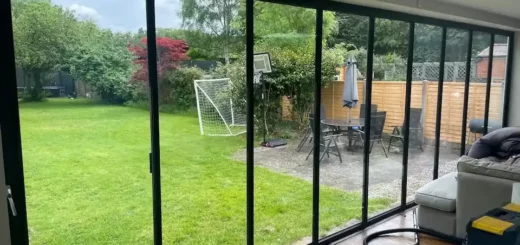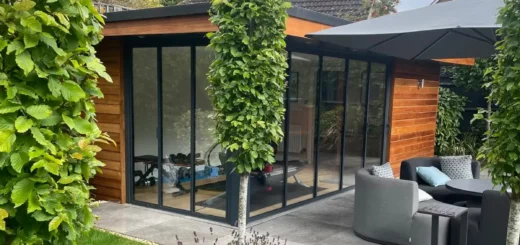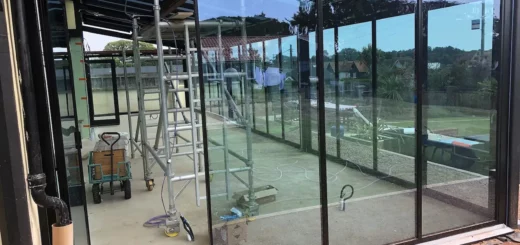A Complete Guide to Glass Bifold Internal Doors
Table of Contents
What Are Glass Bifold Internal Doors?
Glass bifold internal doors comprise multiple glass panels joined by hinges. When opened, they stack neatly to one side in a concertina pattern. Frames, often made of aluminium or wood, hold the glass securely. Closed, they form a see-through barrier, separating areas without blocking views or natural light. Internal glass bifold doors divide rooms while maintaining an open atmosphere. These doors fold against the wall, creating adaptable living areas that suit various needs. Light passes freely between spaces, brightening your home and giving the impression of more room.
Operation and Mechanics
Internal glass bifold doors move smoothly along a track system. The lead door, equipped with a standard handle, opens first. Other panels follow as you push or pull, folding together compactly. This design works well even in smaller spaces, allowing easy movement between rooms.
Internal Door Design Evolution
Door design has progressed beyond simple wooden panels. As open-plan living gained popularity, the demand for adjustable solutions grew. Glass bi fold internal doors emerged to meet this need, offering the advantages of distinct rooms and open spaces simultaneously.
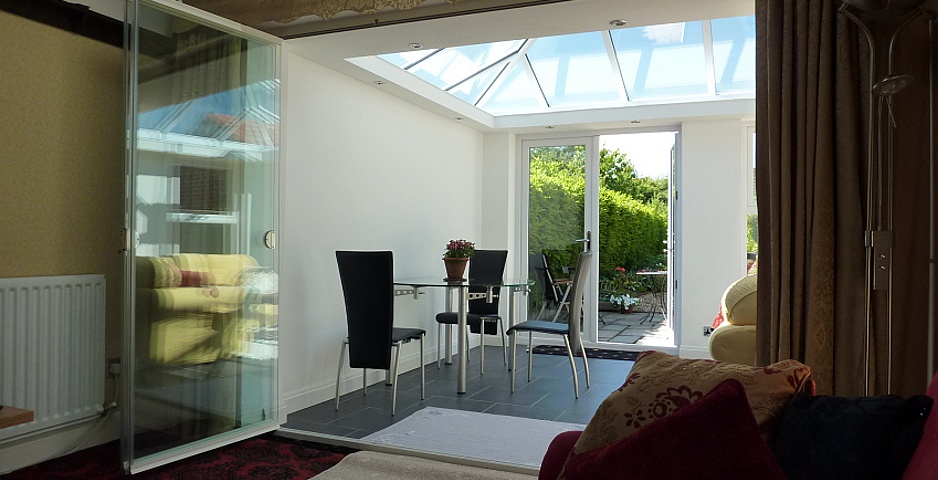
From Traditional to Modern
In the past, homes featured separate rooms for different activities. As our way of life changed, so did our approach to interior layouts. Multi-purpose areas became more common, requiring doors that could adapt. Glass bifold internal doors filled this role, allowing homeowners to create distinct zones without permanent divisions.
Natural brightness has become highly valued in today’s homes. Internal glass bi folding doors let homeowners enjoy separate rooms without sacrificing light. They’re particularly useful in kitchen-diners, where families might want to cook in a closed space but open up when entertaining guests. Internal glass bifold doors offer privacy when needed and openness when desired.
Internal Glass Bifold Doors and Architectural Styles
Glass bifold internal doors suit a wide range of home styles, from period properties to modern builds. Their adaptable nature allows them to complement various architectural designs, adding a touch of contemporary flair without clashing with existing features. Internal glass bifold doors can bridge the gap between traditional and modern aesthetics, creating a cohesive look throughout your home.
Blending with Victorian and Edwardian Homes
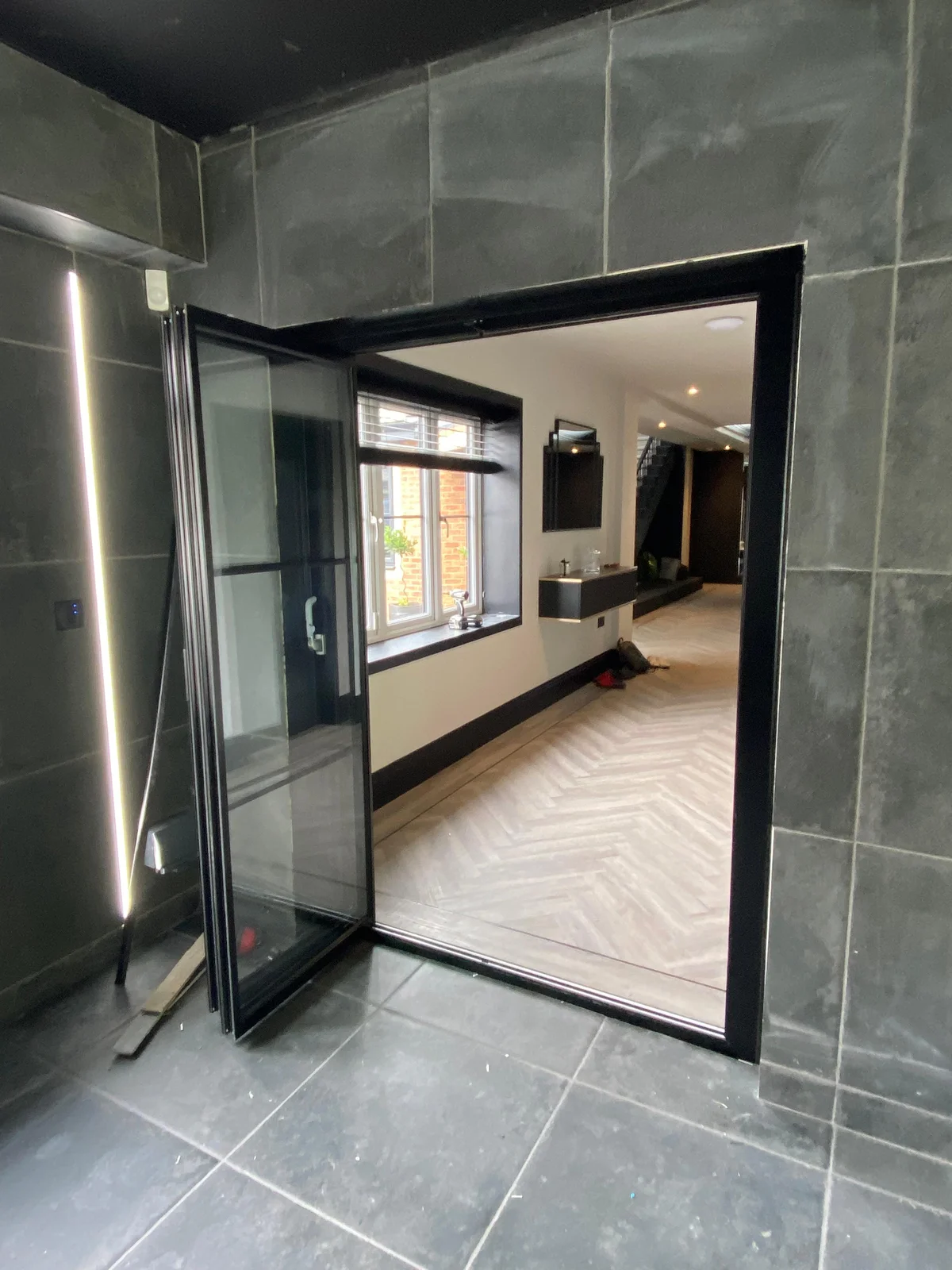
Incorporating glass bifold internal doors into older properties requires a thoughtful approach. The key is to choose designs that respect the original features while adding practical benefits. In a Victorian terrace, for example, glass bi fold internal doors can divide the front and back reception rooms without losing the sense of space and light that makes these homes so appealing.
When installing glass bifold internal doors in a period home, consider designs with thinner frames to maintain the delicate proportions often found in Victorian and Edwardian architecture. Glass panels can be etched or frosted to echo the style of original stained glass windows, creating a harmonious look. Bi-fold internal doors with integral bars are available from some manufacturers, which divide the glass with a grid pattern; these are also known as Crittall style doors.
Mid-Century to Present Homes
Glass bifold internal doors align perfectly with the principles of modernist design. Their clean lines and emphasis on light and space make them ideal for homes built from the mid-20th century onwards. In a 1960s detached house, for instance, bifold glass internal doors can create flexible living areas that honour the original open-plan intentions while providing options for privacy.
For contemporary homes, glass bifold internal doors offer a way to divide space without visual clutter. Frameless designs or those with slim aluminium frames can create an almost invisible barrier when closed, maintaining the clean aesthetic favoured in modern architecture. When open, these doors disappear entirely, allowing for uninterrupted sight lines throughout the living space.
Traditional Cottages
Even in traditional cottages, glass bifold internal doors can add value and improve liveability. They offer a solution to the often dark and cramped layouts of older cottages without sacrificing their cosy charm. Internal glass bi folding doors between a cottage kitchen and living room, for example, can flood both spaces with light while retaining the option to separate them for warmth or privacy.
To successfully integrate glass bifold internal doors into a cottage setting, choose frames in natural wood tones that complement existing beams or woodwork. Consider using divided glass panels to echo the look of traditional cottage windows. This approach maintains the character of the space while introducing modern convenience.
Glass Internal Bifold Doors Room-by-Room
Glass bifold internal doors offer unique solutions for various areas in your home. They can change how you use and enjoy different rooms, adding flexibility and light where needed.
Kitchen-Diner
The kitchen-diner is often the heart of the home, and bifold glass internal doors can make it even more welcoming. They allow you to create a multi-functional space that adapts to your needs throughout the day. When cooking, close the doors to contain cooking odours and noise. For dining or entertaining, open them wide to create a spacious, sociable area.
During family meals, keep the glass bi fold internal doors partially open to maintain a connection between the cooking and dining areas. This setup allows parents to keep an eye on children while preparing food, without compromising on the separation of spaces. The transparency of the doors means that even when closed, the cook doesn’t feel isolated from the rest of the family or guests.
Home Offices
As more people work from home, creating a dedicated workspace has become growingly important. Internal glass bifold doors can carve out a home office without permanently altering your home’s layout. When you need to focus, close the doors to reduce distractions and create a professional backdrop for video calls.
After work hours, open your internal glass bifold doors to reconnect your office with the rest of the living space. This flexibility allows your home office to double as a guest room or reading nook when not in use for work. The glass panels maintain a visual connection with the rest of the house, preventing feelings of isolation during long work days.
Bedrooms
Internal glass bifold doors can add a touch of hotel-style luxury to your bedroom en-suite setup. They provide a clear division between sleeping and bathing areas while maintaining an open, spacious feel. When privacy is needed, simply close the doors. For a spa-like experience, leave them open to create a luxurious suite atmosphere.
The transparency of glass bi fold internal doors allows natural light from bathroom windows to fill the bedroom, making both spaces feel brighter and more inviting. Choose frosted or textured glass for added privacy without sacrificing light transmission. This setup works particularly well in loft conversions or rooms with sloping ceilings, where traditional doors might be impractical.
Living Room Zoning
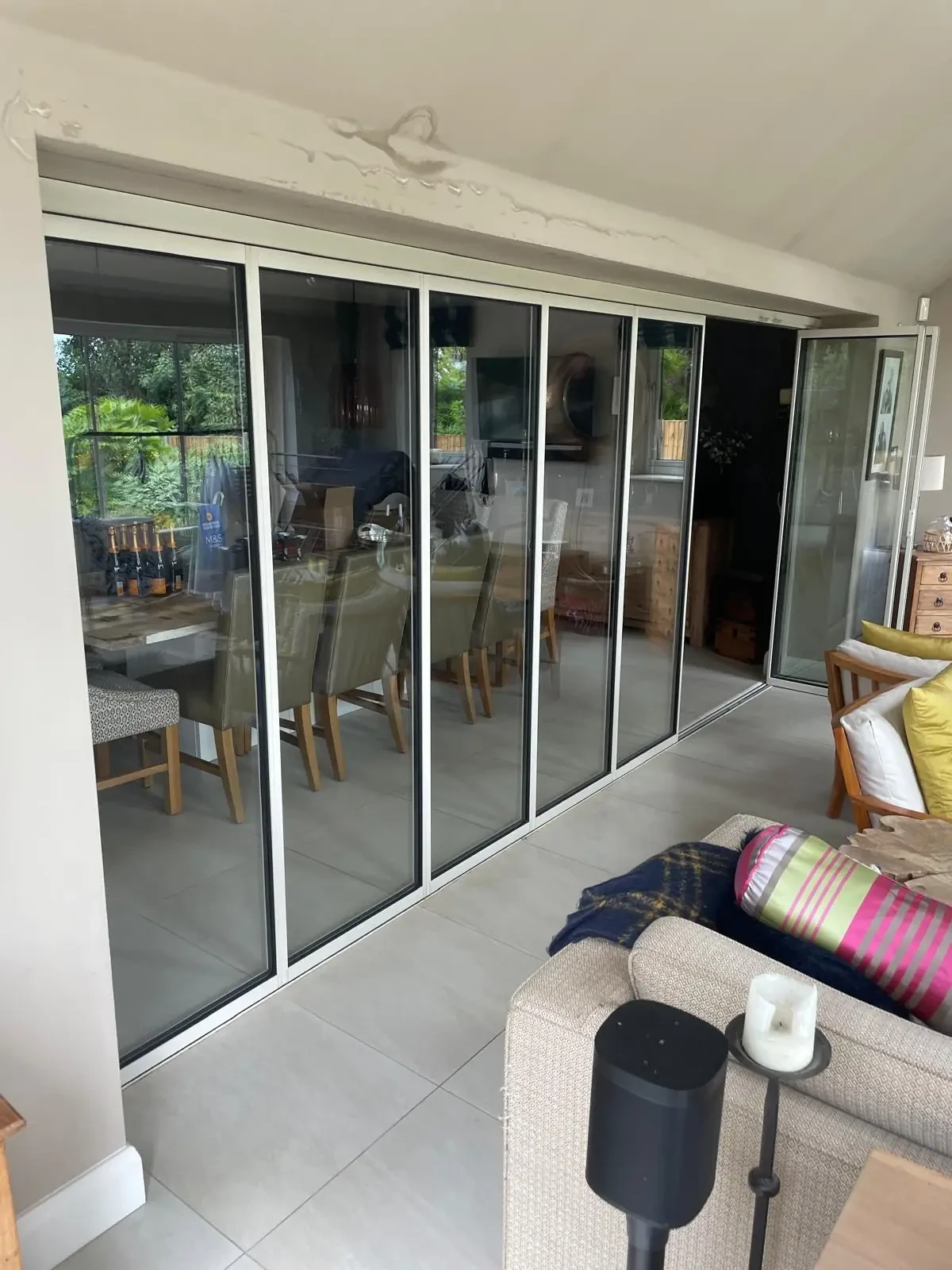
Open-plan living spaces can benefit greatly from the addition of internal glass bifold doors. They allow you to create distinct areas within larger rooms without permanently dividing the space. Use them to separate a TV area from a quiet reading corner, or to create a cosy snug within a larger living room.
During parties or family gatherings, open the bifold glass internal doors fully to create a flowing space for mingling. When you want a more intimate setting, close them to create separate areas for different activities. The glass panels maintain visual continuity throughout the space, preserving the open-plan feel even when the doors are closed.
Slide and Fold Doors – A Variation on Regular Bifolds
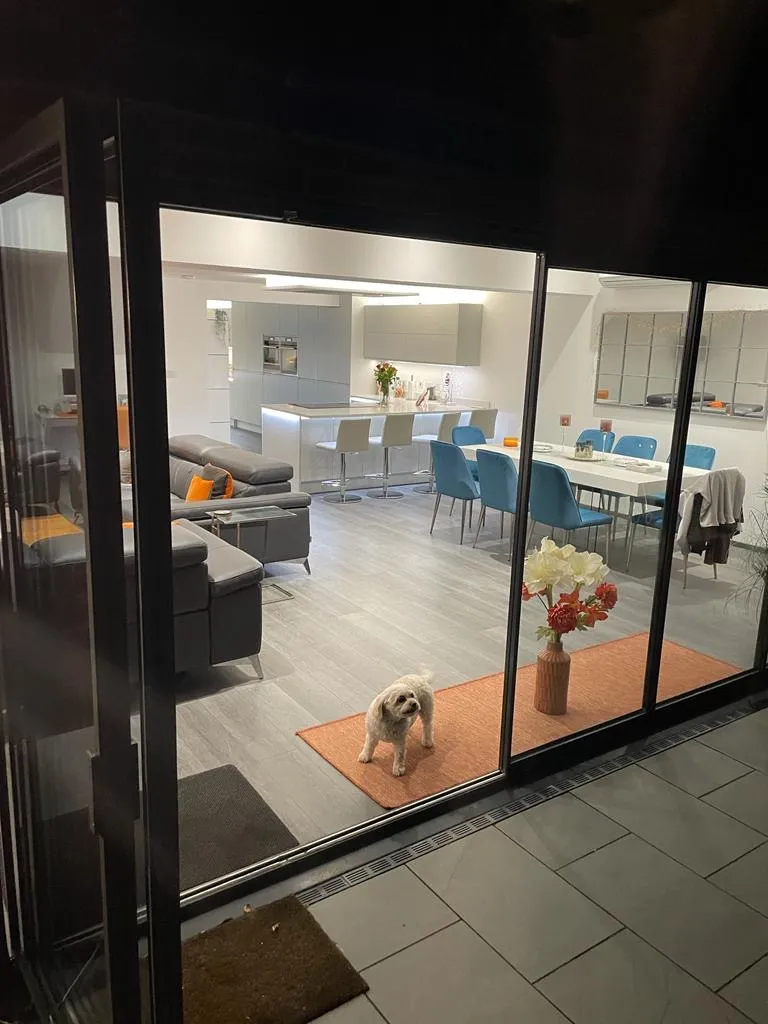
While internal glass bifold doors offer numerous benefits, variations like slide and fold doors provide additional options for homeowners. These innovative designs combine the best features of sliding and folding doors, offering unique advantages in certain situations.
Slide and Fold Doors Explained
Slide and fold doors, also known as slide and stack or slide and pivot doors, operate differently from standard glass bifold internal doors. Instead of simply folding, these doors first slide along a track before folding to one side. This mechanism allows for wider openings and can be particularly useful in spaces where traditional bifold doors might obstruct walkways when open.
The sliding action occurs first, with the doors moving along the track as a single unit. Once they reach the end of the track, the panels then fold and stack neatly against the wall. This two-step process can provide more flexibility in how you open the space, allowing for partial openings that aren’t always possible with standard internal glass bifold doors.
Space-Saving Solutions
In areas where space is at a premium, slide and fold doors can offer advantages over traditional bi-folding interior doors. Because the doors slide before folding, they require less clearance space when opening. This feature makes them ideal for smaller rooms or areas with furniture placed close to the doorway.
For example, in a compact home office that doubles as a guest room, slide and fold doors can provide the flexibility to open the space fully without needing to rearrange furniture. The sliding mechanism allows you to partially open the doors without encroaching on the room’s usable area, a benefit not always possible with standard bifold glass internal doors.
Customisation Options
Like traditional glass bifold internal doors, slide and fold doors offer various customisation options to suit your home’s style and needs. Frame materials range from aluminium for a sleek, modern look to wood for a warmer, more traditional feel. Glass options include clear, frosted, or textured panels, allowing you to balance light transmission with privacy.
Hardware choices for slide and fold doors can differ slightly from those used on standard internal glass bifold doors. The track system often includes both top and bottom guides for smooth operation, and handles may be designed to facilitate both the sliding and folding actions. When selecting hardware, think about both aesthetics and ease of use to ensure your doors not only look good but also function well in daily life.
Furniture Placement and Design Tips with Internal Glass Bifold Doors
Integrating glass bifold internal doors into your home requires thoughtful furniture arrangement and design choices. The right approach can help you make the most of these flexible doors, creating spaces that work well whether the doors are open or closed.
Furnishing Advice
When planning your room layout, think about how the glass bifold internal doors will move when opened and closed. Avoid placing large pieces of furniture directly in the doors’ path. Instead, arrange seating and tables to create clear walkways that align with the doors’ opening direction. This approach ensures easy movement between spaces when the doors are open while maintaining functional areas when they’re closed.
In a living room with internal glass bifold doors leading to a dining area, for example, position your sofa and armchairs to face both the room’s focal point (like a fireplace or TV) and the doors. This arrangement allows for easy conversation when the space is open and a cosy feel when it’s divided. Consider using area rugs to define separate zones within the larger space, helping to maintain distinct areas even when the glass bifold internal doors are fully open.
Lighting Tips
Lighting plays an important but often overlooked role in how glass bifold internal doors affect your rooms. During the day, these doors allow natural light to flow between rooms, potentially reducing the need for artificial lighting. However, it’s important to plan for evening use as well. Install lighting fixtures that work well in both open and closed configurations.
For rooms with internal glass bifold doors, consider using a mix of ambient and task lighting. Pendant lights or chandeliers can provide overall illumination, while wall sconces or table lamps offer more focused light for specific activities. If privacy is a concern, especially in bedroom or bathroom settings, consider adding dimmer switches to control light levels and create the right atmosphere on both sides of the doors.
Colour and Texture Pairings
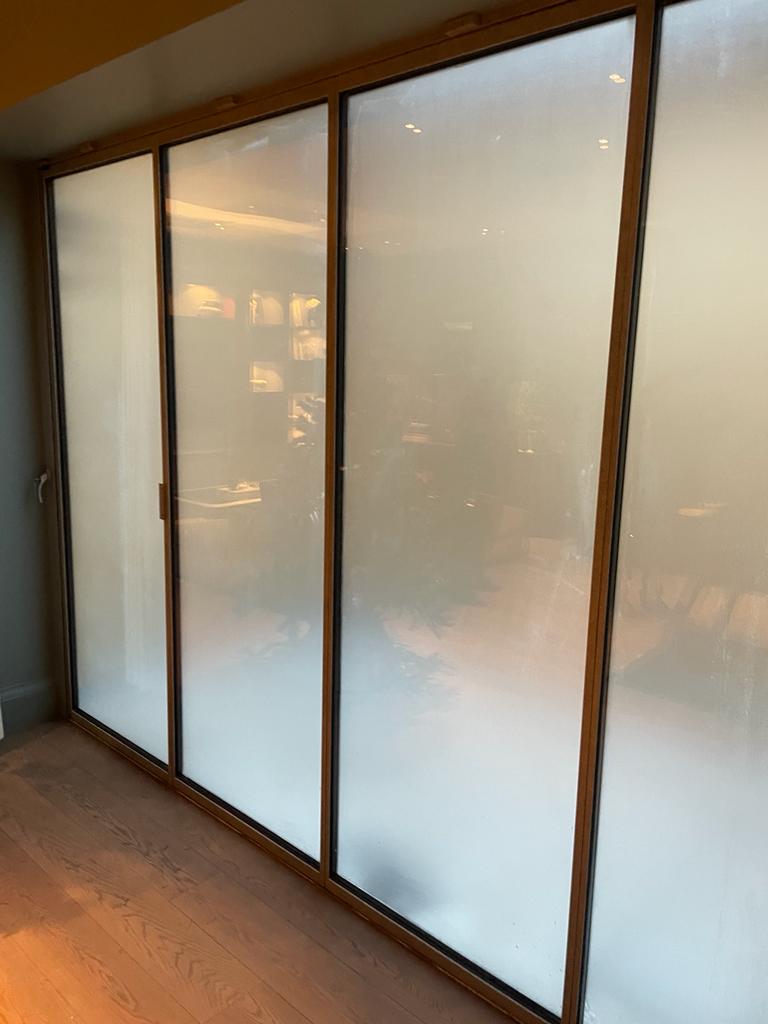
The colours and textures you choose for your walls, floors, and furnishings can have a big impact on how glass bifold internal doors look and feel in your space. Light, neutral colours can help make rooms feel more spacious and bright, working well with the open feel that these doors provide. However, don’t be afraid to use bold colours or patterns to create visual interest and define different areas within a larger space.
When selecting flooring, consider using the same material on both sides of the internal glass bifold doors to create a sense of continuity when the doors are open. If you prefer different flooring in each area, choose complementary materials and colours to ensure a harmonious look. Textiles like curtains, rugs, and upholstery can add warmth and softness to balance the hard surfaces of glass and metal or wood frames.
Remember that glass bifold internal doors themselves can be a design feature. Choose frame colours that either match your décor for a subtle look or contrast with it to make a statement. The transparency of the glass allows you to play with views and vistas within your home, so consider what will be visible through the doors and how it contributes to the overall aesthetic of each space.
Glass Bifold Internal Doors FAQ
What are glass bifold internal doors?
Bi fold glass internal doors are a type of internal door (also known as room divider) that consists of glass panels attached to a folding mechanism. They allow you to separate or open up spaces within your home while maintaining light flow and visibility between areas. Internal bifolds fold back against themselves, typically to one side, creating a wide opening when fully retracted.
How do glass bifold internal doors work?
Concertina doors, also known as bi-fold doors, operate on a track system that guides their movement. When opened, the door panels fold against each other in a zigzag pattern, similar to the way a concertina musical instrument expands and contracts. This design allows for a wider opening compared to traditional swing doors, making them ideal for creating flexible living spaces.
What types of glass can be used in internal folding doors?
Bifold doors with glass can incorporate various types of glass to suit different needs and preferences. Common options include clear glass for maximum transparency, frosted or obscure glass for privacy, and toughened safety glass for added durability. Some homeowners opt for decorative glass patterns or even stained glass to add a unique design element to their doors.
How much space do I need for internal glass bifold doors?
The space required for internal folding doors depends on the number of panels and the overall width of the opening. Generally, you’ll need enough clearance for the stacked panels when the doors are fully open, which is typically about 10-15% of the total door width. It’s also important to consider the swing arc of the doors as they open and close to ensure furniture placement doesn’t obstruct their movement.
What’s the difference between bifold and sliding glass doors?
While both types offer flexible room division, modern internal sliding doors move along a single track, overlapping each other or disappearing into a wall cavity. Bifold doors, on the other hand, fold back on themselves in sections. Sliding doors generally require more wall space to slide along but can offer a sleeker look when closed, while bifold doors need less wall space but may have a more visible frame structure.
What frame materials are available for glass bifold internal doors?
Aluminium bifold doors are a popular choice due to their strength, slim profile, and low maintenance requirements. However, other materials are also available for internal bifolds, including wood for a traditional look, uPVC for a cost-effective option, and composite materials that combine the benefits of different materials. Each material offers different aesthetic and practical properties to suit various home styles and budgets.
Can glass bifold internal doors be customised?
Yes, bespoke bifold doors can be tailored to your specific requirements. Customisation options often include the number and size of panels, frame colour and material, glass type, and hardware finishes. You can also choose different configurations for how the doors stack when open, allowing you to design a solution that perfectly fits your space and style preferences.
What are some popular colours for glass internal bifold doors?
Currently, anthracite bifold doors are very popular, as well as more traditional options – black and pure white. Anthracite, a dark grey colour, offers a modern and sleek appearance that complements contemporary interiors. White bifold doors, on the other hand, provide a clean, bright look that can make spaces feel larger and work well in both traditional and modern settings. Other popular colours include black for a bold statement, and natural wood finishes for a warm, organic feel.
About SunSeeker Doors
With over 20 years of experience, SunSeeker Doors remains at the forefront of door design with our quality-tested patio doors and related products, including the bespoke UltraSlim aluminium slide and pivot door system, Frameless Glass Doors, and Slimline Sliding Glass Doors. All of our doors are suitable for both internal and external use.
To request a free quotation, please use our online form. You may also contact 01582 492730, or email info@sunseekerdoors.co.uk if you have any questions.


